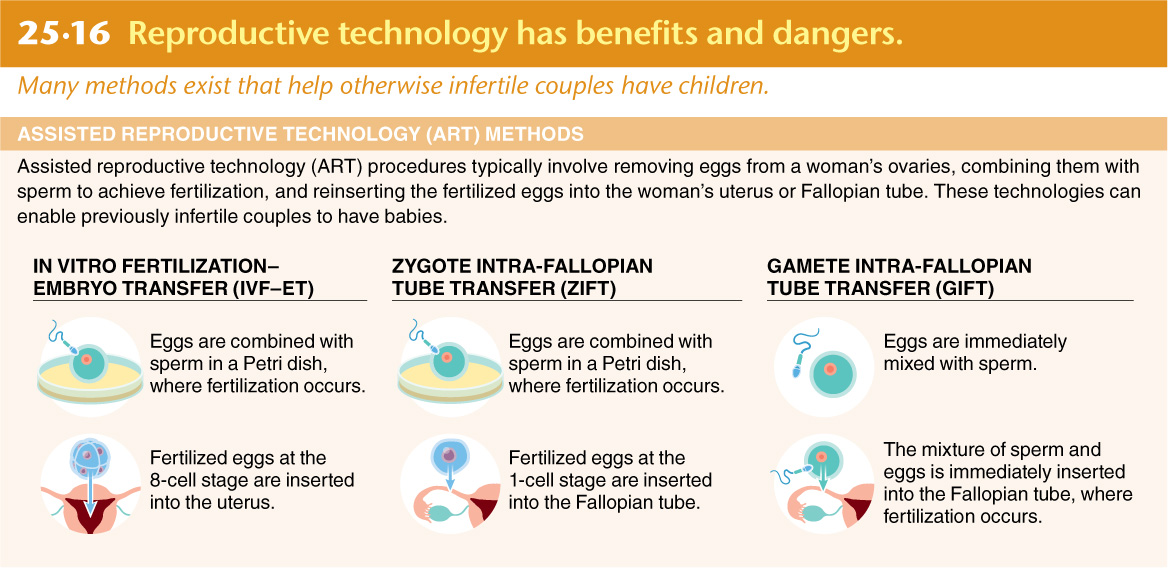25.16
Reproductive technology has benefits and dangers.
Many methods exist that help otherwise infertile couples have children.

Q
When do cells begin to lose their totipotency?
- a) anaphase of mitosis
- b) gastrulation
- c) late prophase I of meiosis
- d) cleavage
- e) neurulation

The phenotype of an individual who is genetically XY but is lacking the sex-
- a) a person who does not have testes but does have male external sex organs.
- b) completely male, because of low estrogen levels.
- c) either male or female, depending on whether the person carries the gene for dHT, which directs development of the penis.
- d) a person with ovaries and female secondary sex characteristics.
- e) completely male, because the person will produce testosterone, which masculinizes the internal and external reproductive organs.

In humans, fetal growth is slowest during which trimester?
- a) first
- b) second
- c) third
- d) fourth
- e) It occurs at the same rate in all trimesters.

In which of the following methods ofassisted reproductive technology does fertilization occur within the woman’s body ?
- a) intracytoplasmic sperm injection
- b) in vitro fertilization–
embryo transfer (IVF- ET) - c) zygote intra-
Fallopian transfer (ZIFT) - d) gamete intra-
Fallopian transfer (GIFT) - e) All of the above are correct.
